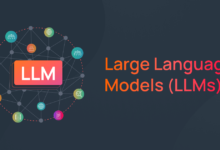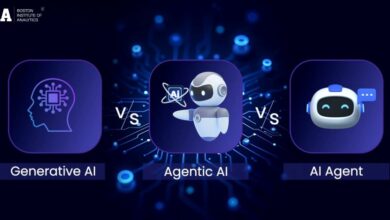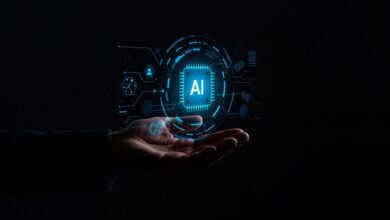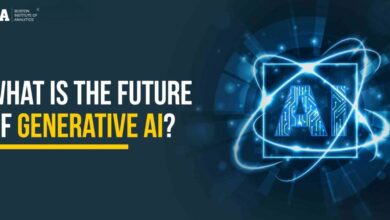AI-Powered Tools That Are Reshaping Financial Modeling
Artificial Intelligence (AI) is the main driver in the finance sector which is undergoing a monumental change. The AI tools are very sophisticated and thus the financial modeling which was earlier done through spreadsheets is now replaced by real-time systems that are intelligent and dynamic.
The experts who take an integrated Financial Modeling Course and Artificial Intelligence Course to master this merging of finance and technology will be very successful in 2025. AI has become a reality and it is the engine that produces unlimited accuracy, speed, and strategic depth in financial analysis and forecasting that are never seen before.
The AI Inflection Point in Financial Modeling
The practice of financial modeling, for many years, depended on human capacity, fixed formulas, and manual data compilation, mostly in software like Excel. This method, though very basic, consumed a lot of time, was susceptible to human mistakes thus some researches even claimed that 88% of the models consisted of errors and could not change with the speed of the modern-day market.
The deployment of AI-enabled tools has radically transformed this whole thing. They do the repetitive, high-volume tasks thus allowing finance professionals to change their role from mere data reporters to strategic advisors. This transitional process is supported by a collection of AI technologies:
- Machine Learning (ML): Learning algorithms which use huge amounts of data to predict financial outcomes, detect market trends and evaluate credit risk with more accuracy than conventional statistical techniques.
- Natural Language Processing (NLP): Powers computers to read, comprehend, and distil meaningful information from large data sets such as unofficial data, Consequently, conventional models can only ignore the situation but AI provides a richer context for the forecasts.
- Generative AI (GenAI): This latest generation can rephrase existing data, like drafting management reports, summarizing complex forecast results, and creating plain-language narrative explanations for “what-if” scenario outcomes.
Key AI Tools and Their Transformative Impact
AI has become counterpart technologies, and the corresponding market is now full of strong platforms that utilize their capabilities in the production of more exhaustive, dynamic, and insightful financial forecasts.
- Automation for Hyper-Efficiency
The most instantaneous and impactful advantage of AI is the mechanization of previously manual and tedious tasks.
- Data Aggregation and Cleansing: The tools of AI make direct connections with various financial systems, cloud data warehouses, and external sources, and as a result, they automatically pull, validate, and clean data. For example, Data rails FP&A Genius and Trullion are tools that employ AI in providing the connection between structured and unstructured data and consequently, the data preparation time is minimized which is always the biggest bottleneck in traditional financial modeling.
- Automated Reporting and Commentary: Generative AI is so powerful that it can instantly produce initial drafts of monthly financial reviews, variance analyses, and board-level commentary, among other things. The analysts are then able to devote their time to making sense of the numbers instead of writing about them.
- Predictive Analytics and Forecasting Accuracy
AI models knowingly enhance estimating by moving beyond simple extrapolation of old data.
- Adaptive Forecasting: AI-driven systems are not like static models; they continuously learn from the incoming data and enhance their predictions, thus making the forecasts more responsive to the variations in business drivers and the changes in market conditions. Planful Predict and Workday Adaptive Planning are the machines learning-powered platforms that provide dynamic, non-stop updated projections.
- Unstructured Data Integration: AI models, through the use of NLP, turn qualitative market signals such as the investor sentiment from new into quantitative forecasts. This gives a better overall picture of the possible future outcomes, a competence that is unavoidable for the modern, real-time decision-making process.
- Advanced Risk Management and Scenario Planning
AI make available capabilities for do in advance risks and testing approach at a scale and speed that was beforehand impossible.
- Richer Scenario Analysis: Tools powered by AI can conduct several thousands of “what-if” scenarios (e.g., the simultaneous occurrence of a 10% increase in supply chain costs and a 5% decrease in demand) within minutes. This power of the finance teams to constant factor impact determination (sensitivity analysis) would be faster and they would be able to assign different probabilities to outcomes. For example, Simudyne provides simulation solutions for large-scale risk management and stress testing.
- Early Risk Detection: Machine learning is very good at recognizing patterns; thus, it is a very useful tool for detecting anomalies, fraud, or early signs of financial distress much earlier than a human analyst could do. With this ability, the company can implement a risk-free strategy ahead of time.
- Specialized Financial AI Platforms
Beyond wide-ranging FP&A tools, focused platforms are emergent to target specific, high-value financial processes:
Investment and Due Diligence: AlphaSense leverages Natural Language Processing (NLP) technology to scrutinize a large amount of documents comprising company disclosures, research reports, and news articles in order to reveal even the slightest trends and investment insights to the analysts. Rogo, an AI tool dedicated to investment banking, utilizes its own financial reasoning algorithms to generate work products such as the compilation of earnings comparisons and the creation of strip profiles, thus, greatly reducing the time taken in conducting due diligence.
Lending and Credit Risk: Zest AI is applying machine learning in the field of lending decisions optimization, estimating risk in a more precise and inclusive way than traditional, static credit scoring techniques do.
The Future of the Financial Professional: AI Integration
The emergence of these AI tools doesn’t mean that the finance professionals will be replaced; rather their functions will be upgraded. The whole scenario now is that instead of being engaged in the repetitive task of handling data, they will be involved in activities that are of high value and require the development of human skills:
- Interpreting AI Outputs: Through the use of AI model and its analysis, professional will be able to understand the business strategy, the AI model’s assumptions and limitations, and make the complex insight of AI clear and actionable.
- Strategic Storytelling: Incorporating the AI reports and narratives in an efficient manner to present financial conditions and strategic advice to the top management.
- Model Governance and Validation: Making sure the AI models comply with ethical standards, are free from bias that might be unintentionally created, and are subject to constant monitoring and improvement.
With the changes taking place, the whole situation is that one of the main skills required will be gradually changing. A conventional Financial Modeling Course will have to closely connect with an Artificial Intelligence Course having similar content and training in both. Professionals will not only be required to know the core finance principles but also to be familiar with data science concepts, which include Machine Learning Algorithms for Financial Modeling, data training, and dealing with conversational AI. The need for this type of upskilling is so strong that a lot of professional training administrations are now providing specialized certifications in AI for Finance to fill precisely the mentioned skills gap.
Final Thoughts: Upskilling is the Competitive Edge
The adoption of AI-based tools in financial modeling is not just a step forward but a full-fledged revolution. By 2025, companies that have the foresight to utilize these technologies will not only be gaining a remarkable competitive edge but also enjoying all the benefits of speed, accuracy, and better strategic understanding that come with it.
In terms of an individual professional, this entire development has put forth a strong demand: upgrading one’s knowledge is a must. Analysts will be greatly disadvantaged if they depend on outdated spreadsheet skills only. The finance professionals who will be most in demand are the ones who can effectively combine the human financial knowledge with the computational power of AI.
Whether you are a finance student or a professional with considerable experience, if you want to make your career future-proof, you have to act swiftly. One of the most important things you can do to positively impact your career is to enroll in a good Financial Modeling Course that also has a strong element of Artificial Intelligence Course content. Be the one who knows the new tools, grasps the AI logic behind them, and guides the next generation of data-driven financial strategy. Finance’s future is smart, and your prowess is its most crucial part.





